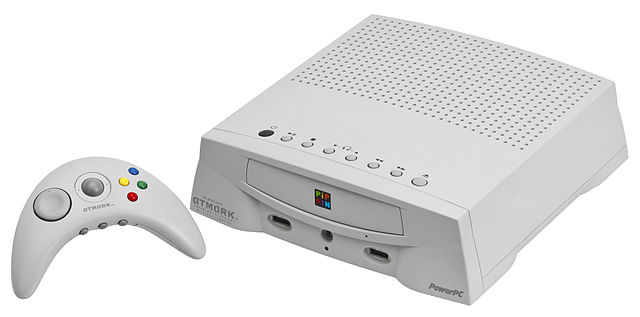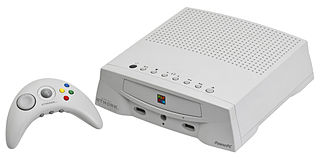Apple Bandai Pippin Review: A Bold Attempt, But a Missed Opportunity
Released in 1995, the Apple Bandai Pippin was an ambitious collaboration between Apple Computer and Bandai aimed at creating a multimedia console that could bridge the gap between gaming, entertainment, and computing. With the backing of Apple's renowned design and technology, the Pippin had the potential to become a game-changing device. However, it quickly became evident that the console's lofty goals and its lackluster execution led to its downfall in the competitive world of gaming.
The Pippin was marketed as more than just a video game console - it was presented as a multimedia hub, capable of running games, web browsing, and educational software. Unfortunately, the ambitious nature of the system was undermined by several flaws in its hardware, software, and marketing, leading to disappointing sales and its eventual discontinuation in 1997. Let's dive deeper into what worked and what didn't with the Apple Bandai Pippin.
Design & Build
One of the standout features of the Apple Bandai Pippin was its sleek, minimalist design. Drawing on Apple's expertise in creating stylish, functional consumer electronics, the Pippin had a clean, modern aesthetic that could easily blend into a home entertainment setup. It was a relatively compact console with a black-and-white finish that was attractive, though not as iconic as some of Apple's other products.
However, the controller was a weak point. The Pippin's controller resembled a typical PlayStation or Saturn-style pad, but it felt clunky and uncomfortable for extended play sessions. The buttons were hard to press, and the ergonomics left much to be desired. The joystick design was stiff and lacked the precision seen in other controllers of the era. The Pippin's peripherals weren't as intuitive as some might have hoped, which detracted from the overall experience.
Performance & Hardware
Under the hood, the Pippin was powered by a PowerPC processor - a chip that Apple used in their computers, providing some strong computing power. It also had CD-ROM capabilities, which allowed it to run games and multimedia applications. However, despite the solid internal hardware, the system's performance didn't quite match up to its competitors, such as the Sony PlayStation or Sega Saturn.
While it did offer decent graphics and sound for the time, the Pippin's hardware couldn't push the boundaries of gaming as effectively as its competitors. The Pippin's performance was often described as underwhelming, with frame rates lower than expected and some games suffering from graphical glitches. This was a major disadvantage when it was up against systems that were already delivering cutting-edge graphics and fluid gameplay.
Game Library
The game library for the Pippin was another significant issue. While the console was capable of running games, it never attracted the support of major developers like Sony's PlayStation or Sega's Saturn. The Pippin's game catalog was sparse, and most of the titles were mediocre or niche. Games like "Power Rangers Zeo: Full Tilt Battle Pinball" and "Gokujou Parodius Deluxe Pack" were released, but the lack of big-name titles and AAA franchises made it difficult for the Pippin to compete in the gaming market.
Moreover, the Pippin's multimedia approach was more focused on things like educational software and interactive movies rather than pure gaming. While this could have set it apart as a hybrid device, it only diluted the system's focus, leading to an identity crisis that ultimately hindered its appeal.
The Pippin's inability to secure strong third-party support and its reliance on mostly Apple-centric games and software led to its underwhelming performance in the gaming market.
Software & Features
The Apple Bandai Pippin did try to innovate with some unique features. Being built on a PowerPC architecture, it could theoretically be used as a multimedia PC, able to run web browsing, email, and even DVD video playback (with additional hardware), at a time when those features were more commonly found on traditional computers. However, this wasn't enough to make the Pippin a standout device.
The console also lacked online gaming features or the ability to easily expand its capabilities, which severely limited its versatility. The software support was another weak point, with the Pippin largely failing to attract developers who could bring engaging, innovative games to the system. Although Apple's expertise in user-friendly operating systems was evident, the lack of compelling software and the limited features available on the Pippin made it hard to take full advantage of its potential.
Market Position & Legacy
Despite the Pippin's strong ambitions and Apple's involvement, it never caught on with consumers. The system was launched during a highly competitive period in the gaming industry, with Sony's PlayStation, Sega's Saturn, and even the Super Nintendo and Sega Genesis still dominating the market. The Apple Bandai Pippin was neither a gaming powerhouse nor an innovative multimedia platform, and as a result, it found itself lost in the shuffle.
The Pippin's failure also can be attributed to the lack of marketing and a clear, focused vision. Apple's marketing didn't emphasize the gaming potential of the console, instead focusing on the system's ability to serve as a multimedia device. This made it hard for potential buyers to understand what the Pippin was really meant to be - a gaming console or a PC.
In the years following its release, the Pippin became a cult favorite for collectors, particularly among Apple and retro gaming enthusiasts. However, the console's short-lived run and underwhelming performance meant that it was largely forgotten by mainstream audiences.
Limitations & Drawbacks
-
Underwhelming Performance: Despite having a solid PowerPC processor, the Pippin's graphics and performance lagged behind contemporaries like the PlayStation and Saturn.
-
Limited Game Library: A lack of third-party support and a small catalog of games hindered the Pippin's appeal to core gamers.
-
Controller Design: The Pippin's controller was uncomfortable and imprecise, leading to less enjoyable gameplay.
-
Identity Crisis: Trying to be both a gaming console and a multimedia hub resulted in a lack of focus and an unclear identity.
Final Verdict
The Apple Bandai Pippin was an ambitious attempt to bring Apple's design and multimedia capabilities into the realm of home gaming. Unfortunately, the Pippin failed to deliver on its promise. Its underpowered hardware, lack of strong game support, and confused marketing led to its failure in the competitive gaming market.
However, for those interested in the history of gaming and Apple's legacy in technology, the Pippin is an interesting and unique piece of hardware. Its retro appeal makes it a collector's item, but for the average gamer, the Pippin was ultimately a missed opportunity.
Score: 4/10
? An ambitious yet ultimately flawed console, the Pippin couldn't quite meet the expectations set by its powerful brand, and its lack of compelling games left it overshadowed by more successful systems.
==



